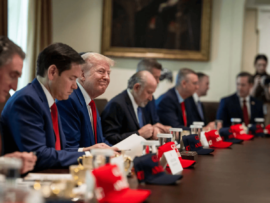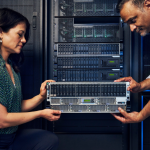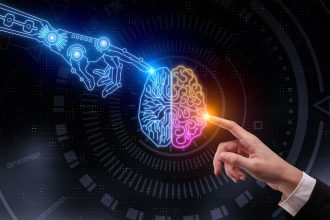
Source: The White House Gallery
President Donald Trump’s administration has solidified its approach to the artificial intelligence industry in a lengthy document rescinding former President Joe Biden’s 2023 executive order on AI. According to a White House statement, the new AI Action Plan draws from more than 10,000 public comments from academia, industry groups, the private sector, and state, local, and tribal governments.
The plan is being led by the Office of Science and Technology Policy, with key figures including Assistant to the President for Science and Technology Michael Kratsios; Special Advisor for AI and Crypto David Sacks; and Assistant to the President for National Security Affairs Marco Rubio.
What are the main points of the AI Action Plan?
The AI Action Plan aligns with the Trump administration’s approach to the generative AI industry: reducing regulations, supporting innovation, positioning AI development as a facet of national defense, and creating jobs, particularly in data centers. The plan focuses on three pillars: “innovation, infrastructure, and international diplomacy and security.”
Some of the plan is punitive. “The Federal government should not allow AI-related Federal funding to be directed toward states with burdensome AI regulations that waste these funds,” it reads, “but should also not interfere with states’ rights to pass prudent laws that are not unduly restrictive to innovation.”
AI Action Plan may be accompanied by executive orders
The action plan is not a binding document or a formal roadmap, although its recommendations are likely to shape future policy. Trump is expected to sign three related executive orders on Wednesday, according to individuals familiar with the plans who spoke with The Washington Post. These will reportedly cover:
- Disincentivizing AI models determined that the administration deems to reflect a left-leaning perspective
- Encouraging the construction of data centers to support AI infrastructure
- Promoting U.S. exports of AI and computing technologies through the U.S. International Development Finance Corporation
AI Action Plan aims to open federal resources to AI infrastructure
One way the plan seeks to ease the progress of generative AI is by streamlining the construction of new data centers. It recommends seeking exceptions or reduced regulations under rules that normally govern water use or pollution, including the Clean Air Act and Clean Water Act. It also recommends that federal lands be made available for the construction of data centers and power generation infrastructure.
The plan suggests stabilizing and improving the national energy grid, acknowledging the need for “new and novel ways for large power consumers to manage their power consumption during critical grid periods to enhance reliability.”
Bringing semiconductor manufacturing onshore remains a priority of the U.S. government under Trump. The plan recommends “removing all extraneous policy requirements” for semiconductor manufacturing projects funded by the 2022 CHIPS Act.
With more advanced AI could come more advanced security threats, the plan stated. It calls for secure-by-design AI capabilities and applications, with strengthened AI incident response teams at the federal level.
“The White House AI Action Plan to promote U.S. technological leadership, advance innovation, incentivize American AI infrastructure, and limit restrictive domestic rules highlights AI’s role as an increasingly strategic asset and core driver of economic transformation, defense capabilities and geopolitical influence,” Moody’s Ratings AVP-Analyst Charleyne Biondi said in an email to TechRepublic.
Climate advocates and others oppose the plan
In opposition are the signatories of the People’s AI Action Plan, which include Amazon Employees for Climate Justice, the Consumer Federation of America, and others.
“We can’t let Big Tech and Big Oil lobbyists write the rules for AI and our economy at the expense of our freedom and equality, workers and families’ well-being,” the groups wrote in a joint statement, “even the air we breathe and the water we drink — all of which are affected by the unrestrained and unaccountable roll-out of AI.”
This is a developing story.
After negotiations with the U.S., Japan gained a tariff cap and committed to $550 billion in U.S. investments.





